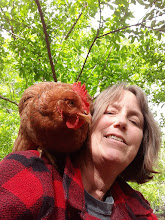This week we'll begin learning about the Grassland Habitats, specifically the African Savanna.
Introduce Africa by showing pictures of this area in a children's atlas, a regular atlas or online. Figure out how far it is from Africa to where you live, look on a map or globe to see what route you could take to get there. Discuss if you could walk or drive there or would you need to go on a plane? Look on the back page of One Small Square African Savanna and notice where grasslands around the world are, these are shown in green. Point out the particular area in Africa which the book focuses on. This is show in yellow.
Read from One Small Square-African Savanna pages 6-9. This is an introduction to the Savanna and some information about a giraffe. It touches on the dry season and the rainy season. This is the focus of week one in the African Savanna.
Discuss how different this area might look in the dry season (brown, little grass, leaves mostly eaten off the trees or dead) as opposed to the rainy season (green, tall grasses everywhere, full lush acacia trees, Happy animals!). The water hole might be muddy or even dried up in the dry season and full like a river in the rainy season.
Activity 1, make the cover of your Savanna Lapbook.
You will need:
1 file folder
green paper of any type
two wiggle eyes
small amount of animal print paper or make your own by coloring an animal print onto white paper. This should be about 2" by 3" give or take.
glue
scissors
green marker
On the front of the file folder, at the top have the child write Savanna in green marker.
near the bottom of the file folder glue the animal print paper. Glue the wiggle eyes onto the animal print paper. Cut up the green paper into strips from skinny to about 1/2" wide, pieces can be from less than an inch tall to 4" inches or so. This is your "grass" Glue the pieces of grass along the bottom of the file folder, cover a lot of the animal print paper but make sure a little shows through and also make sure the wiggle eyes show through. Your cover now looks like a wild animal peeking out of the tall grasses!
Activity 2 plant your own savanna (a variation of this activity is show in the sidebar of page 13 in One Small Square, African Savanna)
you will need
potting soil or just soil from your yard
grass seed
small plant pot or a paper cup will do
popsicle sticks, fat are better, regular will work
small stickers of African animals or markers to draw some
cover your work area with old newspaper or do this activity outdoors.
add soil to your plant pot or cup, nearly to the top.
add grass seed
cover grass seed with a thin layer of soil
on the top 1/3rd of popsicle sticks put stickers of African animals or draw some. Giraffes, zebras, lions etc... 2-4 popsicle sticks per plant pot is enough.
Put the decorated popsicle sticks into the soil in your plant pot. Eventually the grass will grow up to the animals.
Explain, the dry season has just ended look how dry the ground is. Water your grass seed, explain that now the rain has come. Soon the grasses will grow and the animals will be happy. Animals will come from far away if they see rain and lightning in the distance, they know it's raining in another part of the savanna and will race to get there. Make sure to water your grass each day so it will grow. When the grass has grown tall your child may like to cut it, as if the animals have chewed the grass. What happens now? If it's still the rainy season the grass will grow all over again and get tall. Some grasses can grow to 6-9 feet tall! The rainy season lasts from approximately March-October. Then the dry season takes over from October-March.
Information sheet Giraffe on enchanted learning color the picture if desired, read information to child. They can draw themselves standing next to the giraffe and compare heights. Use some math and work out how much taller an adult giraffe is than you. Do it again with a baby giraffe. Even a baby giraffe is taller than a child and many adults!
Take a tape measure outside and measure out 19 feet. That's how tall the tallest giraffes are. Measure out 6 feet, this is how tall a baby giraffe is.
If possible find a book about giraffes at your library or look online for a printable book. I found some on edhelper.com. Read a little about giraffes each day through the week.
For older children:
Draw Write Now book 8. Try drawing the giraffe. Write a story about a giraffe. This can be fictional or non- fiction based on the information you've learned today.
For next week you will need the book:
DK 24 hours, Water Hole. Around the clock with the animals of the grasslands. ISBN 0756611261.
Next week we will add a water hole to our lapbook, we will learn about elephants and we will lean more about Africa in general.
Saturday, September 13, 2008
Subscribe to:
Post Comments (Atom)

No comments:
Post a Comment